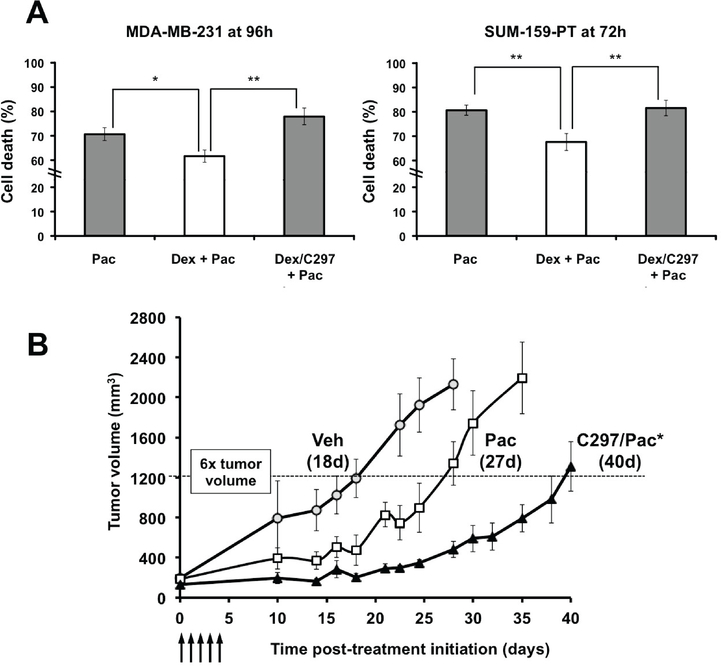Figure 2. GR activation inhibits chemotherapy-induced cytotoxicity of cultured TNBC cells and selective GR antagonism increases sensitivity to chemotherapy in vivo.
(A) MDA-MB-231 and SUM- 159-PT cells were treated with paclitaxel alone (Pac, 10nM), with Vehicle, Dex (100nM), Dex/Pac, or C297(1μM)/Dex/Pac. C297 restored cytotoxic sensitivity at 96 hours (MDA-MB-231) and at 72 hours (SUM-159-PT) following Pac. The bars represent the average percentage cell death of n=3 independent experiments and error bars represent standard error of the mean (S.E.M). * = p value <0.05 and ** = p <0.01 (unpaired Student’s t-test) when compared to Dex/Pac. (B) MDA-MB-231 tumor xenograft re- growth is significantly inhibited by C297 (20 mg/kg/day) pre-treatment one hour prior to Pac (10 mg/kg/day) compared to Pac alone. Arrows refer to administration of Pac/Veh +/− C297/Veh. Pac-treated tumor re-growth was significantly smaller than vehicle, p<0.05, while C297/paclitaxel versus paclitaxel alone delayed post-treatment tumor re-growth significantly. The dotted line represents a 6x increase in re- growth of tumor volume; time to tumor re-growth to this size was 18d (Veh), 27d (Pac), and 40d (Pac/C297). The asterisk (*) represents p < 0.05, comparing C297/Pac to Pac alone. Both C/297 vs Pac and Pac alone vs Veh were significantly different based on a repeated measures ANOVA and the Holm- Sidak post-hoc significance test (Veh/Veh n=3, Veh/Pac n=6 and C297/Pac n=9).

